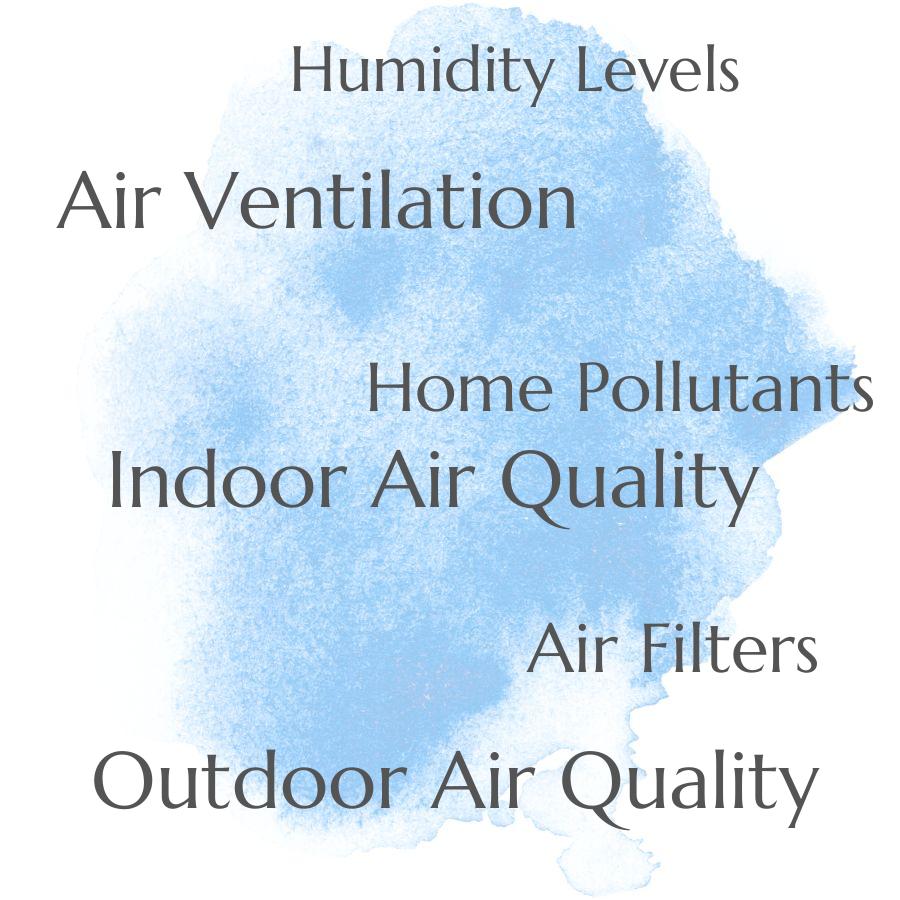Outdoor air quality can have a significant impact on indoor air quality in your home, as pollutants from outside can enter through windows, doors, and other openings. Poor outdoor air quality can lead to an increase in allergens, dust particles, and other contaminants inside your home.
The quality of the air you breathe in your home is important for your health and wellbeing. Unfortunately, indoor air quality can be affected by outdoor air pollution.
In this blog post, we’ll explore how outdoor air quality can impact indoor air quality in your home and what steps you can take to protect yourself from poor outdoor air conditions. We’ll also discuss ways to improve the overall indoor environment so that you and your family can breathe easy.
Pollutants

These pollutants can come from both indoor and outdoor sources, and they can affect the air quality inside your home. Outdoor air pollutants such as vehicle exhaust, smoke from burning wood or coal, industrial emissions, and dust particles can all enter your home through open windows or doors.
Once indoors, these pollutants mix with other indoor contaminants like cleaning products, paint fumes, mold spores, pet dander and dust mites to create an unhealthy environment for you and your family. Poor outdoor air quality can also increase the amount of time it takes for indoor pollutants to dissipate after being released into the home.
This means that if outdoor air pollution is high in your area then it could be contributing to poor indoor air quality in your home.
Ventilation
It involves the exchange of outdoor air with indoor air, which helps to reduce pollutants and improve the overall quality of the air inside a home. Ventilation can be achieved through natural means such as open windows or mechanical systems like fans and HVAC systems.
Natural ventilation relies on wind currents to bring fresh outdoor air into a home, while mechanical ventilation uses fans or other devices to force fresh outdoor air into a home. Both methods help to remove stale, polluted indoor air and replace it with clean, fresh outdoor air that has been filtered by plants and trees outside.
This helps reduce levels of airborne pollutants such as dust mites, pollen, mold spores, smoke particles, pet dander and more that can cause health problems for people living in the home.
Air Filters
They work by trapping airborne particles such as dust, pollen, and other allergens that can be brought in from outside. By filtering out these pollutants, air filters help to keep the air inside your home clean and free of contaminants.
They can also help reduce odors from cooking or smoking that may linger indoors. Air filters come in a variety of sizes and types depending on the needs of your home; some are designed for larger spaces while others are better suited for smaller areas like bedrooms or bathrooms.
It is important to regularly change or clean your filter according to manufacturer instructions so it continues to effectively remove pollutants from the air you breathe indoors.
Humidity Levels
Humidity is the amount of water vapor present in the air, and it can have a significant impact on how comfortable we feel indoors. High humidity levels can cause discomfort due to increased perspiration and make it difficult for our bodies to cool down.
On the other hand, low humidity levels can lead to dry skin, sore throats, and respiratory problems such as asthma or allergies. The outdoor air quality affects indoor air quality because when outside humidity is high, moisture will be drawn into your home through windows and doors.
This increases the relative humidity inside your home which can create an uncomfortable environment with poor air quality. Conversely, if outdoor humidity is low then moisture will escape from your home leading to lower relative humidity inside which could also affect comfort levels and health issues related to dryness such as nosebleeds or cracked lips.
It’s important that you monitor both outdoor and indoor relative humidities so that you can take steps to maintain a healthy balance between them for optimal comfort and health benefits in your home environment.
Temperature Control Systems
These systems work by taking outdoor air and filtering it through an intake system, then heating or cooling it as needed before releasing it into the home. This process helps to ensure that the indoor air quality is kept at a comfortable level, regardless of what is happening outside.
Temperature control systems can also help reduce pollutants from entering the home, as they filter out particles such as dust and pollen before allowing them inside. By controlling both temperature and pollutants, these systems can help maintain good indoor air quality in your home.
Building Materials and Furnishings
The type of material used in the construction of a home, as well as the furniture and other items inside, can affect how much outdoor air pollution is able to enter the home. For example, if a house has poor insulation or gaps in windows or doors, then outdoor air pollutants such as dust, pollen, smoke particles and other airborne contaminants can easily make their way indoors.
Certain types of building materials like particleboard may contain formaldehyde which can be released into the air over time. Furnishings such as carpets and upholstered furniture may also contain volatile organic compounds (VOCs) that are released into the air when exposed to heat or sunlight.
These VOCs can contribute to poor indoor air quality if not properly ventilated.